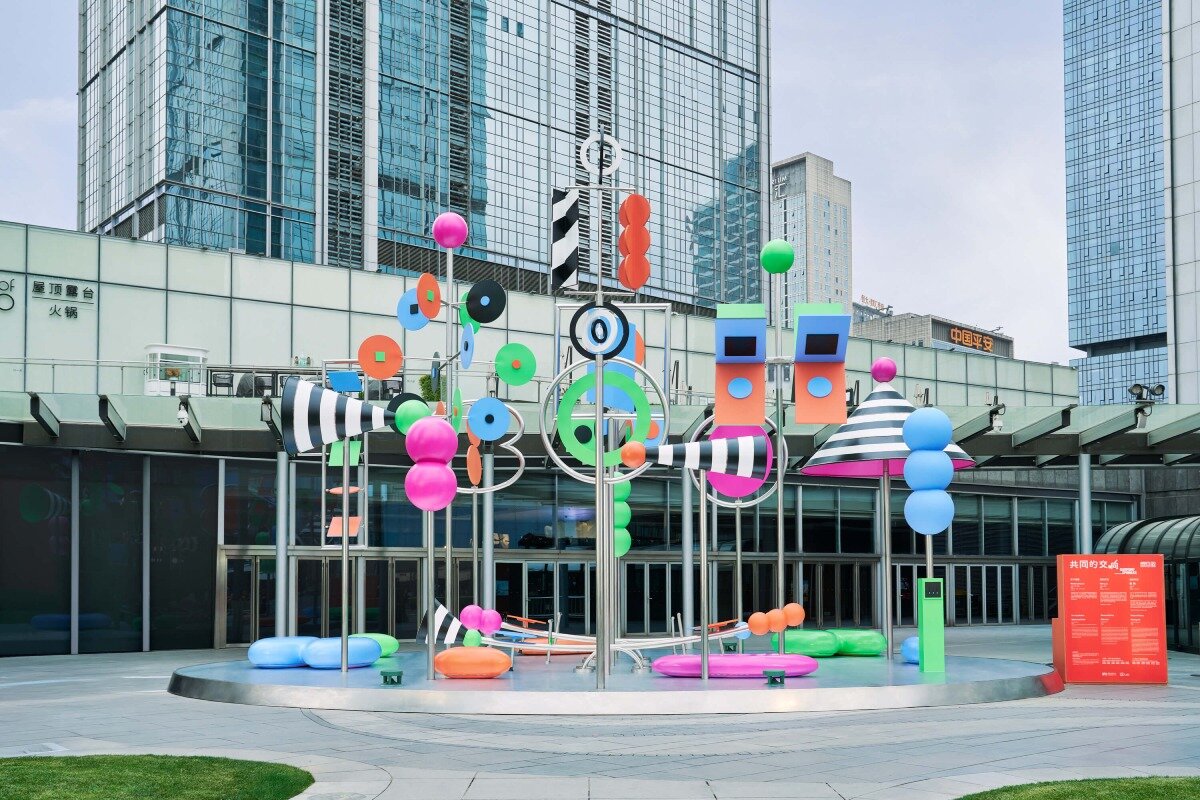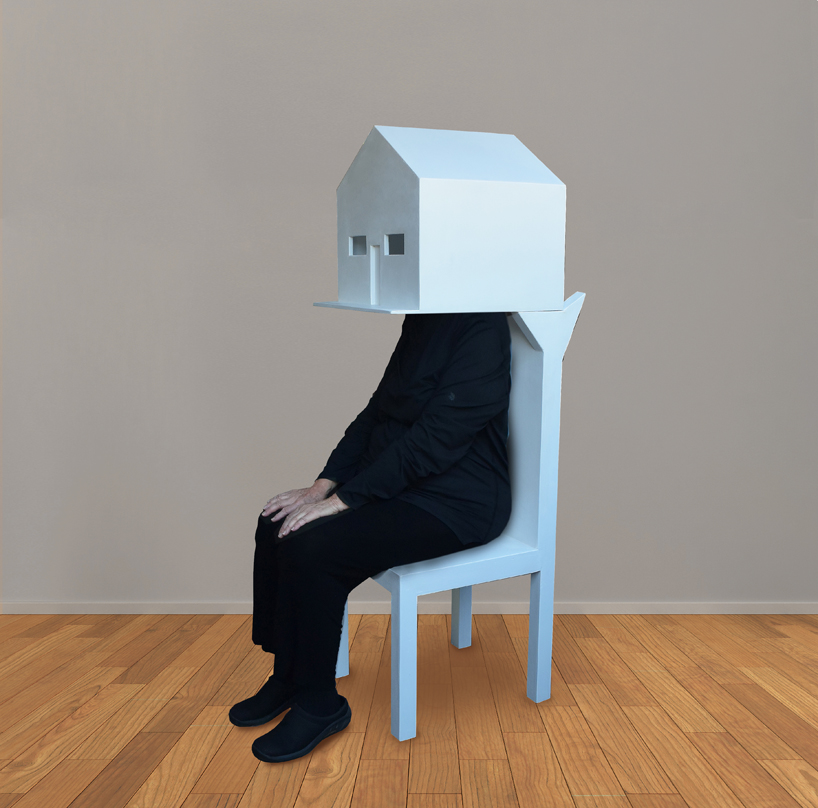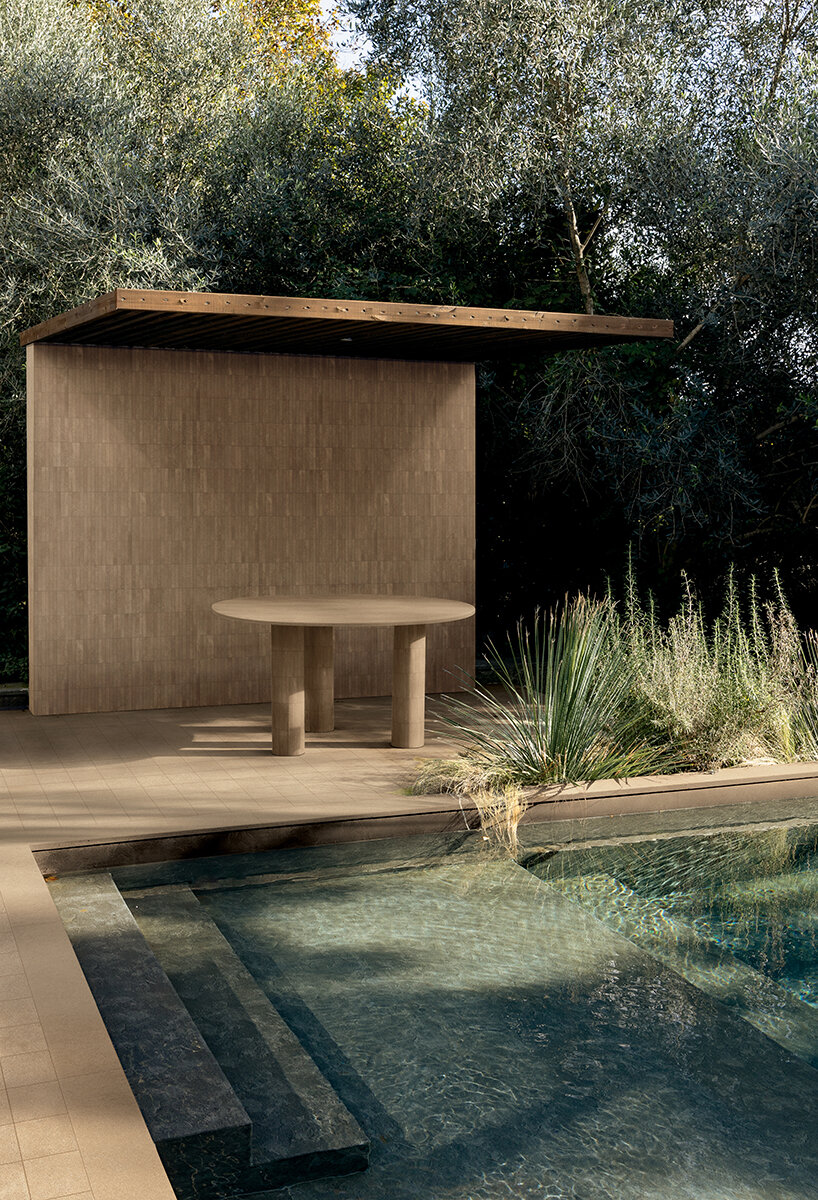reframing a legacy at maison la roche
ABERTO arrives at Maison La Roche in Paris, France for its fourth edition, once again casting contemporary Brazilian art in architectural conversation with Le Corbusier’s modernist masterpiece. For Filipé Assis, the curator behind the concept, the house’s polychromatic walls and open plan were meaningful catalysts. ‘La Roche was projected already to host the client’s art collection,’ he tells designboom in an interview, noting how the team made full use of Le Corbusier’s original hanging system to respect the building’s heritage status. In this unique exhibition setting, forty newly commissioned works by twenty-five Brazilian artists unfold in dialogue with both structure and history. ABERTO4 is on view from May 14th — June 8th, 2025.
At the heart of the exhibition is the lasting imprint of Le Corbusier on Brazilian architecture and design. La Roche becomes a lens through which these connections sharpen, revealing how architectural form seeps into visual culture. ‘The Ministry of Health and Education in Rio was one of the very first skyscrapers in Latin America,’ Assis points out, marking a moment when Le Corbusier’s partnership with Lucio Costa and Oscar Niemeyer initiated a seismic shift in Brazil’s architectural trajectory. These reverberations shaped Brasília, as well as movements like Neo-concrete art and Tropicália music, demonstrating how architecture served as a launchpad for creative expression across many disciplines.
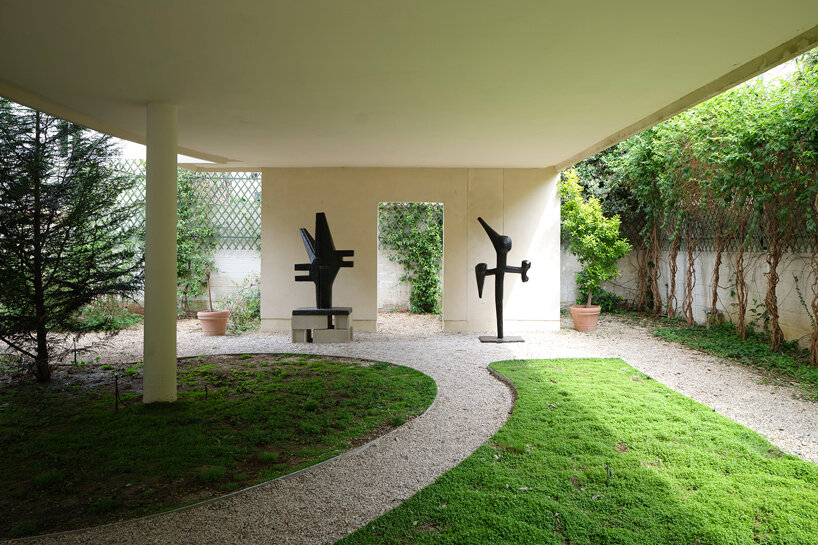
Liuba Wolf (sculptures) | image © Thomas Lannes
between france and brazil
Throughout ABERTO4, the architecture of Maison La Roche frames a chromatic and spatial logic that many of the artists embraced from the outset. ‘Maison La Roche has a curious palette of colors,’ Assis notes, ‘easier to create dialogs with than his later, bolder palettes.’ Works by Luísa Matsushita and Marina Perez Simão respond directly to this chromatic character, deepening the show’s spatial sensibility. Claudia Moreira Salles, one of the exhibition’s curators, emphasizes how ‘color accentuates the perception of space‘ — a principle that guided the positioning and selection of each work within the home’s rooms.
The exhibition also surfaces deeper currents of cultural exchange. Historic documents and models recount Le Corbusier’s urban studies for Rio and São Paulo, while pieces like Oscar Niemeyer’s rarely reproduced Marquesa bench — granted special release by his foundation for the occasion — offer a material embodiment of the friendship between France and Brazil. ‘France welcomed Niemeyer during the Brazilian dictatorship,‘ Assis reflects. ‘This piece is part of that legacy.‘ Overall, ABERTO4 proposes a Brazil drawn together by dialogues between geometry and gesture, art and ideology, and architecture and nationhood.

from left to right: Liuba Wolf (sculpture), Sérgio Camargo (sculpture), Lygia Pape (sculpture), Hélio Oiticica (painting), Lygia Clark (sculpture) | image © Thomas Lannes
in conversation with filipé assis
designboom (DB): As the creator of the ABERTO exhibition concept, what drew you to explore the link between Le Corbusier and modernist architecture in Brazil?
Filipé Assis (FA): The main point that marked modernism in Brazil was the the Ministry of Health and Education in Rio de Janeiro that was projected by Le Corbusier in partnership with Oscar Niemeyer, Lucio Costa, and other modernist architects. This was one of the very first skyscrapers of Latin America. Since then, Niemeyer and Costa, the two main architects behind Brasilia, were already saying that Le Corbusier’s influence completely changed their perspective on architecture. From that point on, both architects started to explore their own paths.
When the idea of Brasilia came in the 1950s, it was the main driver for not only architecture, but for creativity in general in Brazil. Because at that time, the Brazilian capital was in Rio. Everything happened during this new concept of Brasilia. in terms of music we had Tropicália. In terms of the arts we had Neoconcretism. So with this exhibition we wanted to show how this interaction of Le Corbusier and Brazilian architecture was so important for the arts as well.

from left to right: Sérgio Camargo (sculpture), Mira Schendel (painting), Aluísio Carvão (painting), Lygia Pape (sculpture), Hélio Oiticica (painting), Lygia Clark (sculpture) | image © Thomas Lannes
DB: How did the architectural setting of La Roche House inform the way you approached the curation and installation of the artworks in ABERTO4?
FA: La Roche was commissioned by Swiss banker and art collector, who was still single when he died. The whole house was was projected already to host his art collection. Le Corbusier designed a hanging system for displaying artwork, which we we are using for the show — the house is a UNESCO landmarked building, so we can’t make any holes.
The show will be divided between historical and contemporary sections. Within the chambre du gardien, a room originally designed for the home’s caretakers, we are displaying old documents and letters illustrating this relationship between Le Corbusier and Brazil. We are also producing and displaying physical models of the building, as well as of some urbanistic studies that Le Corbusier did for both Rio de Janeiro and São Paulo. Within the former gallery that Monsieur La Roche used to hang his collection, we are going to display post war Brazilian art. The rest of the show is contemporary.

Guardian’s Room: Le Corbusier (enameled hand), Roberto Burle Marx (Gouache) and models of the Capanema Palace — Ministry of Education and Health | image © Thomas Lannes
DB: How did you and the curators select contemporary Brazilian artists to respond to this legacy in new ways?
FA: We chose Brazilian artists that already have a relationship with architectural forms — either geometric or more organic. We gave these artists a briefing about the house and about Le Corbusier as an artist. They produced artworks that are related to this story. For instance, Beatriz Milhazes is presenting a collage that’s in dialog with a collage made by Le Corbusier. She was inspired by him as an artist.
Luiz Zerbini painted large canvas of a Brazilian modernist building inspired by Le Corbusier’s Unité d’Habitation in Marseille. You can see that the Brazilian architect drew inspiration from Le Corbusier, and Zerbini drew inspiration from that architect. It’s nice to show these dialogs. We also have Luísa Matsushita, for instance, who explores Le Corbusier’s palette of colors. So every artist chose one point from his work to explore.

Luiz Zerbini | image © Thomas Lannes
DB: Many of the new commissions explore the intersection of geometry and organic forms — how does this visual language connect Brazil’s modernist past to its artistic present?
FA: There is an opposition between the geometric constructivist art, and the other that is linked to the organic, gestural abstraction. The first is linked more to asocializing aspect, while the second is more individualist. These two styles are often linked together because they were based in the same historical moment. But I don’t think this makes any sense, because there’s a fusion between art and ideology. So let’s say that a strong characteristic of Brazilian culture is the fusion of different concepts. Brazil, in the end, is a country that is linked by more bridges than walls.
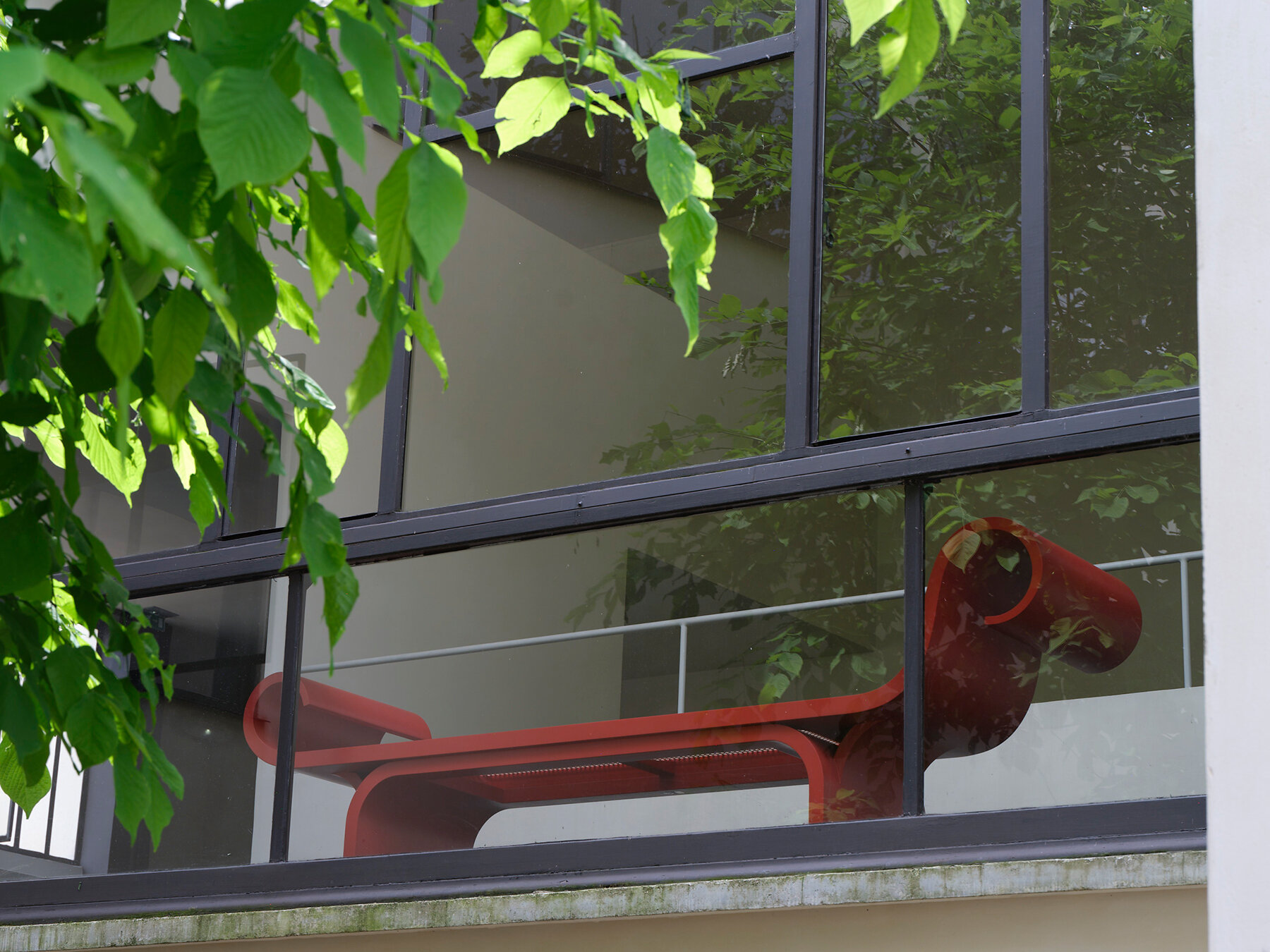
Red Marquesa bench, Oscar Niemeyer | image © Thomas Lannes
DB: Several works reference political histories, especially Niemeyer’s ties to the French Communist Party. How does the show navigate the relationship between modernist ideals and ideological legacies?
FA: Ideological modernism has run its course in architecture. But if utopias have not come to fruition, the legacy of Brazilian modernism has given us a grammar forms that continues to produce and enable innovative works. Even the Postmodern period references the Modern movement for its forms, and no longer for its ideology.

from left to right: Cícero Dias (painting), Anna Maria Maiolino (sculpture), Luisa Matsushita (painting), Mira Schendel (painting on an easel), and Sidival Fila (textile) | image © Thomas Lannes
DB: Can you talk about the significance of including iconic furniture pieces alongside contemporary artworks in the show?
FA: One especially meaningful work on view is the Marquesa bench designed by Oscar Niemeyer. We chose this piece for several reasons. First of all, because it was designed by Niemeyer who had a connection to Le Corbusier, as I explained. Also because Niemeyer lived in France, a country which welcomed him as a friend during the Brazilian dictatorship back in the 1960s. He did many, many projects there. So as part of the cultural exchange between France and Brazil that celebrates the friendship, we hoped to show a real example of this this friendship.
It’s also worth mentioning that this Marquesa bench is super important because these benches were orignally made for a museum in São Paulo called the Memorial da America Latina. And he never allowed any reproduction of them. And the Oscar Niemeyer Foundation very sensitively allowed for the production of one for us in celebration of ABERTO happening in France.

Maria Klabin (painting) | image © Thomas Lannes
DB: The dialogue between color and space is central to both Le Corbusier’s architecture and many of the works in this exhibition. How did the team approach the chromatic staging of the show?
FA: Maison La Roche has a curious palette of colors. They are easier to create dialogs with than the his later palettes, which include much stronger colors. So when we were choosing the artworks, most of them, as I mentioned, were commissioned by contemporary artists. So the artists themselves took these colors into consideration, as they defined the spaces that they were given to produce these works.
DB: What do you hope visitors will take away from the show?
FA: I would hope that visitors could learn more about this legacy that Le Corbusier left to Brazil, and how the seed of modernism ended up growing into different forms of creativity within the visual arts, design, and architecture. I hope that with this show, visitors can also learn more about our country and our artists.
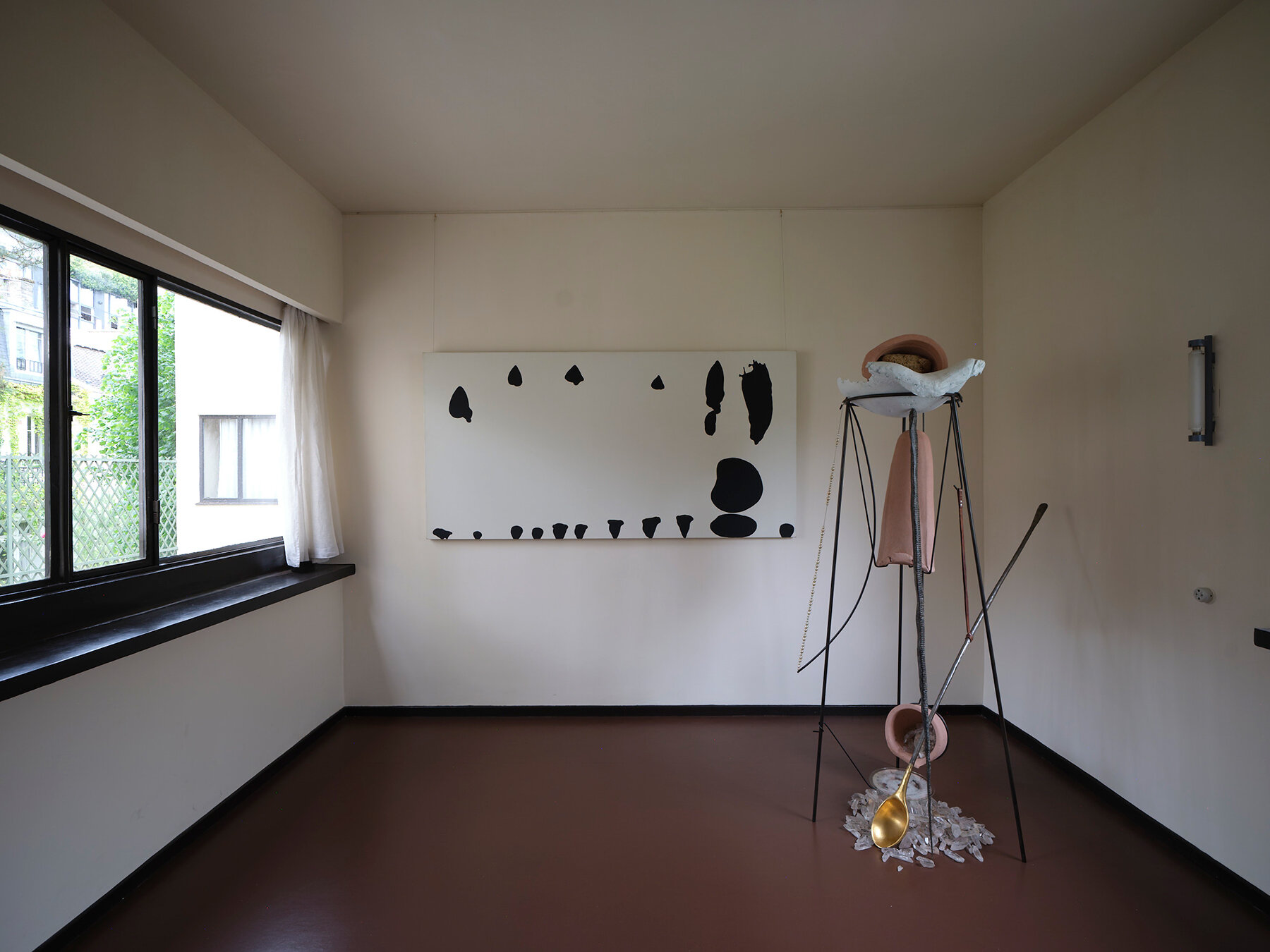
painting by Anna Maria Maiolino, sculpture by Tunga | image © Thomas Lannes
project info:
name: ABERTO4 | @aberto.art
location: Maison La Roche, 10 Sq. du Dr Blanche, Paris, France
on view: May 14th — June 8th, 2025
photography: © Thomas Lannes | @lannes.thomas
exhibition concept creator: Filipé Assis
curators: Lauro Cavalcanti, Kiki Mazzucchelli, and Claudia Moreira
collaborators: Le Corbusier Foundation, Lucio Costa Estate, Burle Marx Institute, Oscar Niemeyer Foundation
collaborating galleries: Fortes d’Aloia & Gabriel, Mendes Wood DM, Luisa Strina, Nara Roesler, Mennour
The post interview: ABERTO4 at maison la roche traces le corbusier’s impact on brazilian modernism appeared first on designboom | architecture & design magazine.
